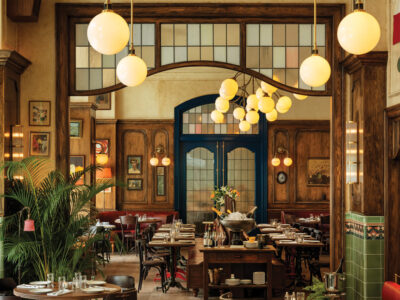
A Few Words with Witold Rybczynski
The next time a new landmark is proposed in the nation’s capital, Witold Rybczynski will weigh in on the matter. The Martin and Margy Meyerson Professor of Urbanism and Real Estate has been named to serve on the Commission of Fine Arts, an agency that advises the federal and District of Columbia governments on the design of everything from U.S. coins to parks and war memorials.
Rybczynski, the author of A Clearing in the Distance: Frederick Law Olmsted and America in the Nineteenth Century and The Most Beautiful House in the World, among other books, responded to a few e-mailed questions from Gazette associate editor Susan Frith:
Why do you think you were appointed to serve on the commission? Among other topics you have written about Olmsted, who designed the Capitol grounds, and Palladio, whose architectural influence can be found in the White House itself. Do you think that range of expertise makes you an appealing choice?
The commission consists of an architect, a landscape architect, an artist, two non-specialist citizens, and the director of the National Gallery. Although trained as an architect, my particular role is to address urban-design issues.
I have an eclectic’s appreciation for architecture, and the commission certainly reviews many types of designs, so I think I bring an open mind to the table.
If you had to single out any public building, monument, or space in D.C., which would you describe as your favorite or least favorite?
Favorites would include Henry Bacon’s Lincoln Memorial, and [John Russell] Pope’s National Gallery. And of course the Mall itself.
The National Museum of the American Indian (NMAI), which opened in September, fills the last building site on the Mall. How well do you think all the pieces of the Mall fit together to achieve some sort of balance.
I haven’t seen the NMAI yet (we are invited to the opening). I don’t think that the Mall requires to be uniform. The space is so powerful that it ties together many buildings of many eras: [the original] National Gallery, [its] East Wing, the Smithsonian, and (even) the NMAI.
The National World War II Memorial, which opened last April on the Mall, was 17 years in the making—and has been criticized by some for its location and design. More than 5,000 entries were submitted for the World Trade Center memorial in New York, and there have been disagreements over what feelings that memorial should evoke, what it should “say” about the terrorist attack. With so many competing visions, how does one design a “successful” memorial?
There is a long tradition of memorials, that teaches us what memorials can, cannot, and even should not, accomplish. The idea of canvassing public opinion has not (in Oklahoma City, for example) produced great memorials. There is also a sense that every constituency should be represented, which produces memorials that sink under the weight of multiple messages. Finally, the resistance of the art world to representation is a problem. There is a place for abstract memorials (the Washington Monument, for example, is almost entirely abstract), but the assumption that a memorial cannot include representation is hobbling. You end up with too much water (like the proposed 9/11 memorial at the WTC site), or too much writing (the FDR Memorial). —S.F.




